Colleagues in UCC will be disappointed that this season the local side, Cork City, will be plying their trade in the First Division. The relegation of Cork City last season followed a rapid decline, since the club were league and cup double winners as recently as 2017, and were in the top two league positions for the five seasons from 2014 to 2018.
Aside from the local disappointment, the relegation of Cork City also has implications for the geographical representation of the league and reduces the reach of the league into the major population centres in Ireland.
This season there are no Premier Division clubs in the second, third, and fourth largest cities in Ireland. Cork, Limerick, and Galway will all have teams in the First Division this season. This is a combined urban population of approximately 400,000 without a top flight team.
The relegation of Cork City, even with the relegation of Shelbourne from Dublin, and their replacement with Drogheda United and Longford Town means there is a greater concentration of clubs on the east coast. The map below shows the location of clubs in the Premier Division in 2020 and in the coming 2021 season. The red dots represent clubs in both; green are clubs only in 2020, and yellow dots represent clubs only in 2021.
The green line demonstrates that the west and south of the island are not represented in the 2021 Premier Division season.
Six of the clubs (clustered around the greater Dublin area) have average distances of less than 130km this season. The average distance travelled has fallen from 190km to 158km. This means the concentration of east coast/Leinster clubs provides means that they have notably lower average distances than the average.
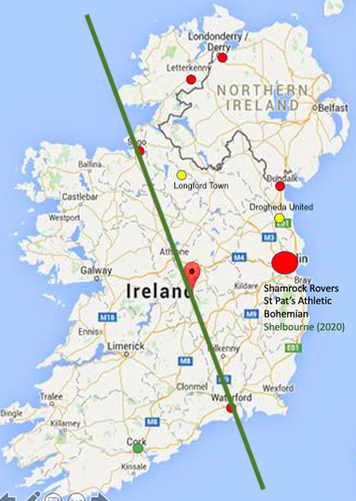
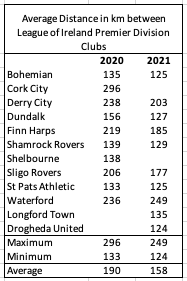
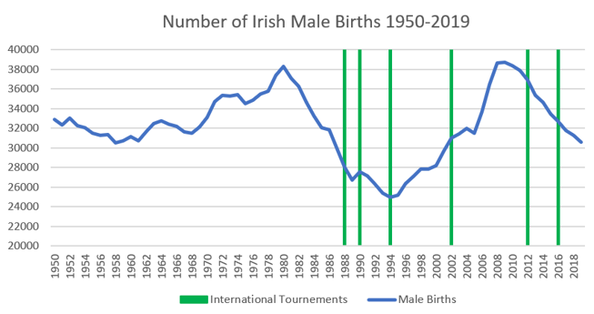
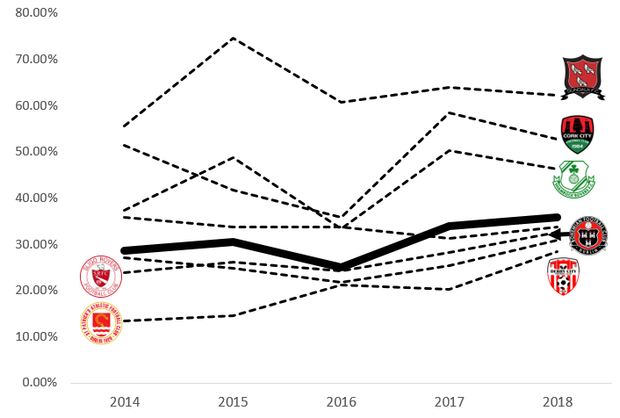
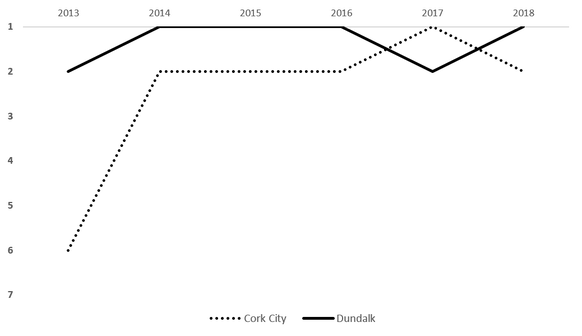
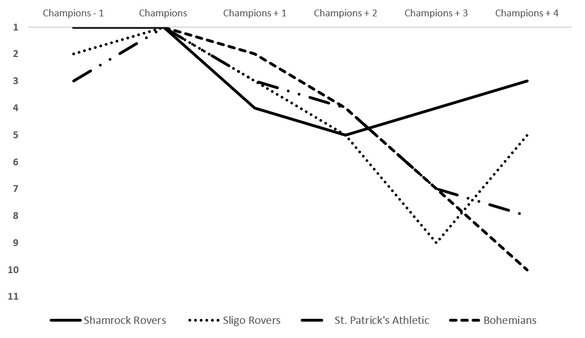
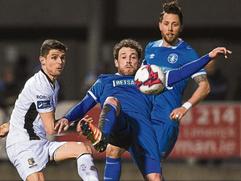
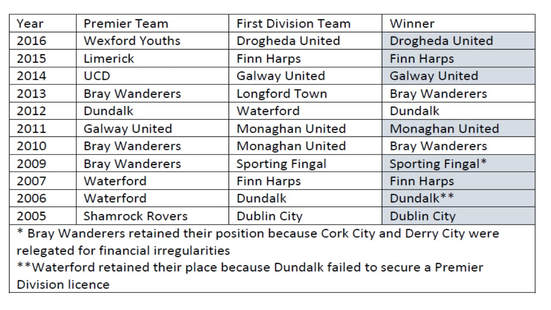
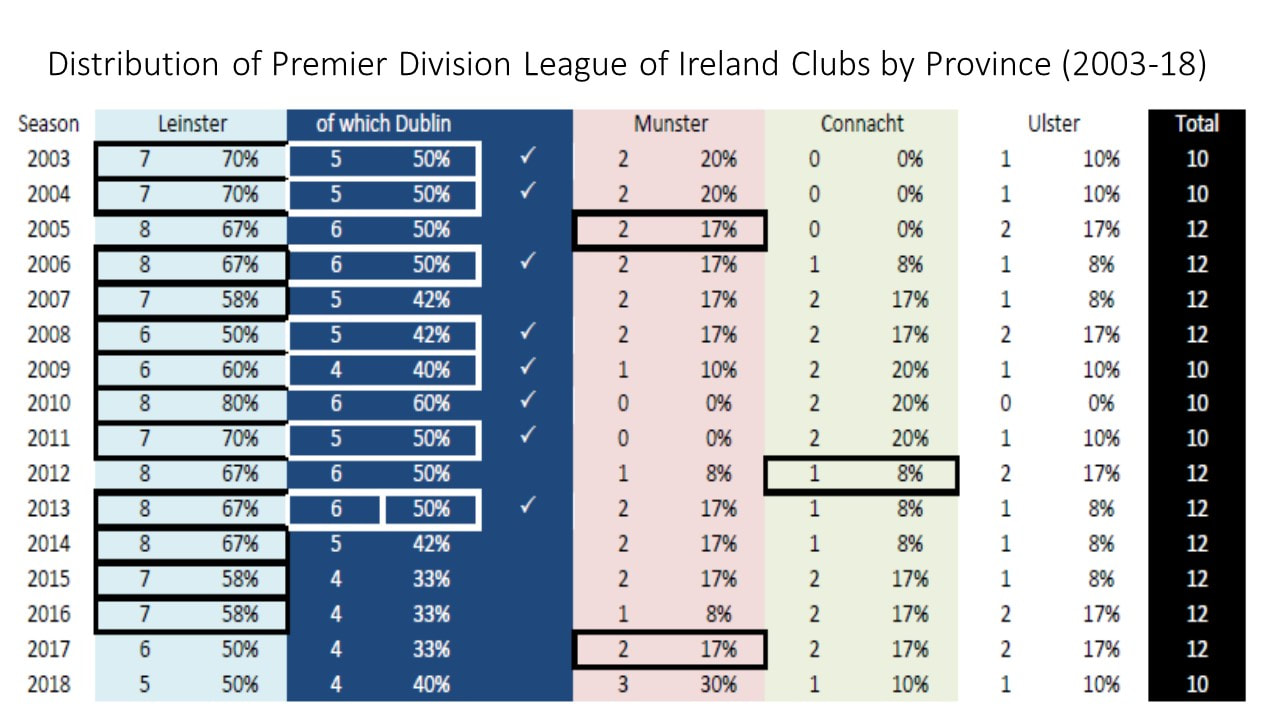
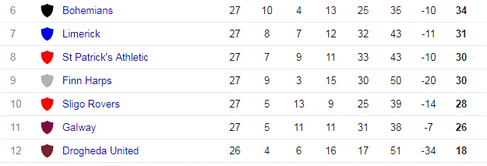
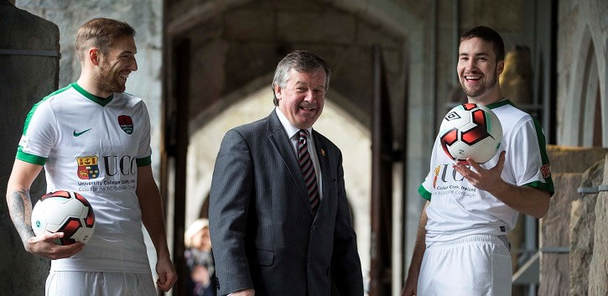
 RSS Feed
RSS Feed